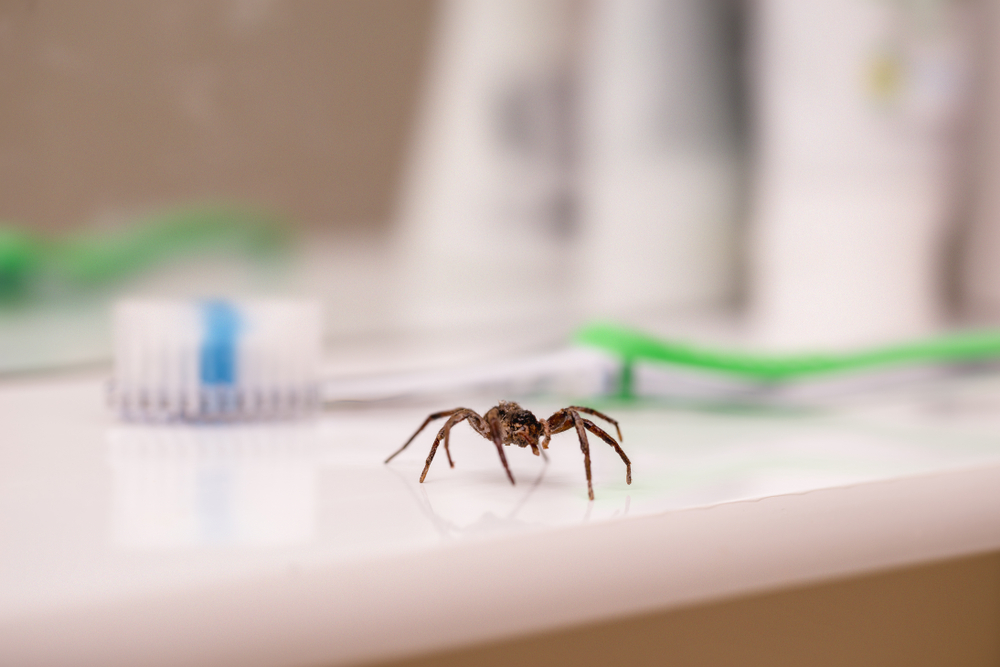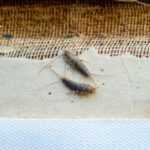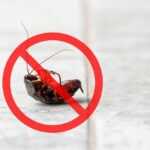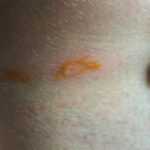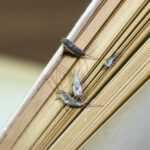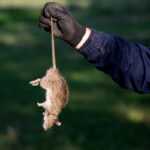The World’s Most Dangerous Poisonous Spiders
Concerned about poisonous spiders? Learn to identify dangerous spiders, like the Brown Recluse and Black Widow, understand the symptoms of their bites, and know immediate steps to take for safety.
- The brown recluse, black widow, and Brazilian wandering spiders are among the most dangerous, each with potent venom that requires immediate medical attention if bitten.
- Preventing spider bites involves maintaining a clean environment, sealing entry points, and regularly inspecting clothing and areas where spiders may hide.
- Treatment for spider bites includes cleaning the wound, symptom management, and in severe cases, administering antivenom or other medical interventions based on the spider species.
Brown Recluse Spider
The brown recluse spider, known scientifically as Loxosceles reclusa, is a name that sends shivers down the spine of many. These venomous spiders are commonly found in the southern, central, and Midwestern United States, preferring to build their retreats on wooden surfaces and in hidden locations. Their bodies are light brown and they have a distinctive violin-shaped marking on their back, making them relatively easy to identify.
Despite their fearsome reputation, brown recluse spiders are not known to bite easily. They are reclusive by nature and will only bite when they feel threatened or trapped against the skin. Most brown recluse spider bites occur when people unknowingly press them against their skin, often when putting on clothes or shoes that the spiders have hidden in.
The venom of the brown recluse spider is particularly dangerous because it contains enzymes like hyaluronidase and sphingomyelinase D, which destroy blood vessel walls and cause skin ulcers. The initial bite is often painless, but within hours, it can lead to significant swelling, redness, and blistering. In severe cases, the venom can cause skin necrosis, resulting in large, open sores that are slow to heal.
Being aware and cautious are the best defenses against these spiders. Regularly checking clothing and shoes, especially if they’ve been left in secluded areas, can prevent many bites. Suspected brown recluse bites require prompt medical attention to effectively manage symptoms.
Black Widow Spider
The black widow spider is perhaps one of the most infamous spiders in the world. Belonging to the genus Latrodectus, black widow spiders are easily recognizable by the distinctive red hourglass mark on their shiny black abdomen. These venomous spiders, including black widows, are found in various parts of the world and are known for the potency of their venom.
The venom of a black widow spider is approximately 15 times more potent than that of a rattlesnake. Despite this, a bite from a black widow is often described as feeling like a pinprick on the skin. However, the symptoms that follow can be severe, including intense pain, muscle cramps, and spasms, which can last for several days. Adult female black widow spiders, which are more dangerous, can live up to three years.
Prompt medical treatment is necessary for black widow spider bites, particularly for vulnerable groups such as children and the elderly. Antivenom is available and can be lifesaving in severe cases. To avoid bites, exercise caution in dark, undisturbed areas like basements, garages, and woodpiles.
Brazilian Wandering Spider
Brazilian wandering spiders, belonging to the genus Phoneutria, are some of the most aggressive and venomous spiders in the world. These nocturnal hunters are primarily found in Brazil and parts of Central and South America. Unlike most spiders, they do not build webs to catch prey but actively hunt at night.
The venom of Brazilian wandering spiders has neurotoxic effects that can cause severe symptoms such as salivation, irregular heartbeat, and in men, prolonged painful erections. There are nine recognized species of Brazilian wandering spiders, and the females, being larger and more aggressive, often attack males after mating. In Brazil, approximately 4,000 bites from these spiders are reported each year, but severe cases remain relatively low.
Their aggressive nature and potent venom make them a spider to be wary of. Immediate medical attention is essential if bitten. Symptoms can be managed through supportive care, with antivenom available for severe cases.
Sydney Funnel Web Spider
The Sydney funnel web spider, native to Southern and Eastern Australia, is considered one of the most dangerous spiders due to its venomous bites. The lethal dose of its venom for humans is alarmingly low at 0.2 mg/kg. The venom is highly potent, with males being four to six times more venomous than females.
Symptoms of a funnel web spider bite include intense pain, diaphoresis, hives, and piloerection. The venom yield of an average male Sydney funnel web spider is approximately 0.81 mg. The availability of an effective antivenom has significantly reduced fatalities, but rapid medical intervention is essential.
Several human deaths have been recorded due to the bite of this spider, making awareness and caution paramount. Steering clear of their habitats, such as moist, cool environments like gardens and woodpiles, can prevent encounters.
Redback Spider
The redback spider, scientifically known as Latrodectus hasselti, is another member of the widow spiders. These venomous spiders are identified by a prominent orange or red stripe on the back of the female spider, along with an hourglass-shaped mark. They are commonly found in Australia and are known for their potent venom.
Bites from redback spiders can cause severe pain, sweating, rapid heartbeats, and swollen lymph nodes.
The symptoms from a female redback spider’s bite can escalate to:
- localized pain
- swelling
- nausea
- vomiting
- restlessness
- increased blood pressure
- respiratory failure
Antivenom is available and can prevent severe reactions if administered promptly.
Female bites are the most dangerous, so caution around their habitats, typically in areas like gardens, sheds, and outdoor furniture, is essential. Frequent inspections of these areas can help avoid encounters and bites.
Brown Widow Spider
The brown widow spider, another member of the Latrodectus genus, is less aggressive than its black and redback counterparts.
These spiders typically inhabit:
- buildings
- old tires
- under automobiles
- shrubs
- outdoors under rocks, logs, and debris
Although their bites are less common, they can still lead to severe symptoms in vulnerable populations such as children and the elderly.
There have been two reported fatalities associated with brown widow bites in Madagascar, and bites are often misidentified due to their similarities with black widow bites. Taking precautions in known habitats of these spiders is the best way to prevent bites.
Yellow Sac Spider
Yellow sac spiders are known for their aggressive behavior and their pale yellow or cream-colored bodies that blend into light-colored backgrounds. These spiders are often found indoors when seeking shelter from cold weather.
A bite from a yellow sac spider can result in redness, swelling, and a sharp stinging pain similar to that of a bee sting. Common reactions include localized redness and swelling. Being aware of their presence and preventing their entry into homes can help avoid painful encounters.
Wolf Spider
Wolf spiders, with their characteristic long legs and eight eyes, may look intimidating, but their bites are not considered dangerous. These spiders do not build webs but hunt their prey, making them unique among other spiders.
A wolf spider bite may cause pain similar to a bee sting but is generally not harmful. Managing their presence involves regular cleaning and using a vacuum cleaner to remove them from indoor spaces.
Symptoms of Poisonous Spider Bites
Timely treatment relies on recognizing the symptoms of poisonous spider bites. Brown recluse spider bites can lead to inflammatory and painful lesions, necrosis, and significant swelling. Initial symptoms may start with redness and swelling, escalating to blistering and ulceration.
Redback spider bites may cause severe local pain, sweating, and systemic symptoms such as nausea and hypertension. Similarly, brown widow spider bites can result in pain, nausea, and sweating. General symptoms from poisonous spider bites can include pain, swelling, necrosis, fever, respiratory distress, kidney dysfunction, and in extreme cases, death.
Supportive care is crucial for managing symptoms from bites of both black widow and brown recluse spiders. Preventing severe complications requires immediate identification and treatment.
Treatment for Poisonous Spider Bites
Treating spider bites immediately involves cleaning the wound, applying cold packs, and promptly seeking medical attention. Severe black widow spider bites require administration of muscle relaxants, narcotics, analgesics, and, in severe cases, antivenom.
There is no specific antivenom for brown recluse spider bites, so treatment focuses on relieving symptoms such as severe pain and skin necrosis. For bites from funnel web spiders, treatment includes supportive care, antivenom, and rapid hospital transport. Brazilian wandering spider bites are similarly managed with symptom control.
Preventing Spider Bites
Maintaining a tidy home and sealing any gaps or entry points can lower the chances of spider bites. Removing clutter like old furniture and newspapers eliminates potential spider habitats. Regularly check places like garages and woodpiles, where spiders often inhabit low-lying webs.
To prevent spiders from nesting, children’s toys should not be left outside. Sealed containers can deter spiders from nesting in cluttered areas.
From the brown recluse to the wolf spider, understanding the world’s most dangerous poisonous spiders is essential for safety and awareness. Recognizing the symptoms of bites, knowing the appropriate treatments, and taking preventive measures can significantly reduce the risks associated with these venomous creatures.
Awareness and proactive measures are your best defenses against spider bites.
Frequently Asked Questions
What should I do immediately after a spider bite?
It is essential to clean the wound, apply a cold pack, and seek medical attention promptly. This approach helps prevent infection and manage any potential complications.
How can I identify a brown recluse spider?
To identify a brown recluse spider, observe its light brown color and the distinctive violin-shaped marking on its back. These characteristics are key to distinguishing it from other spider species.
Are all widow spiders dangerous?
Yes, all widow spiders possess potent venom that can lead to serious health issues. It is advisable to exercise caution around these spiders.
Can wolf spider bites be harmful?
Wolf spider bites can cause pain comparable to a bee sting, but they are generally not harmful. Thus, while discomfort may occur, they do not pose a significant threat to humans.
How can I prevent spider bites in my home?
To prevent spider bites in your home, maintain a tidy environment, seal any gaps, and utilize pest control services. Regularly inspect areas where spiders are known to nest for added safety.
